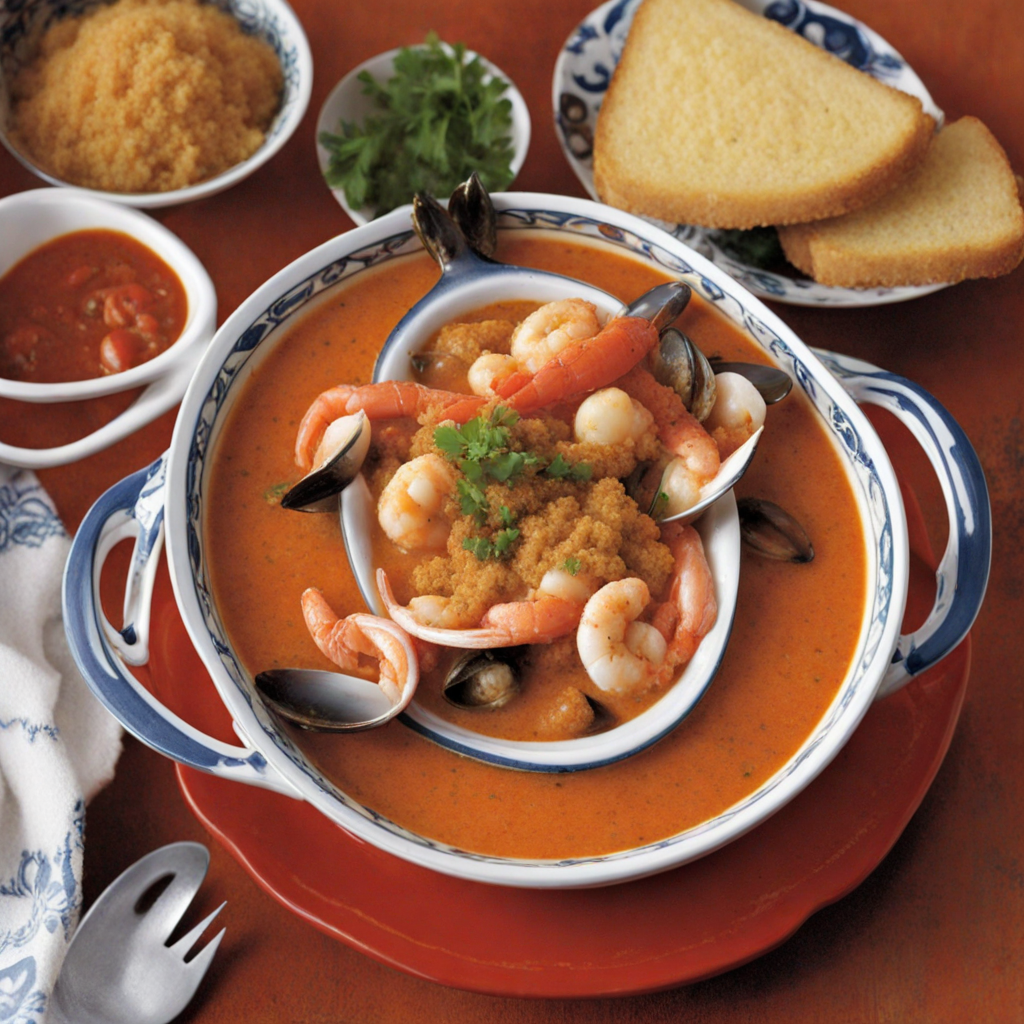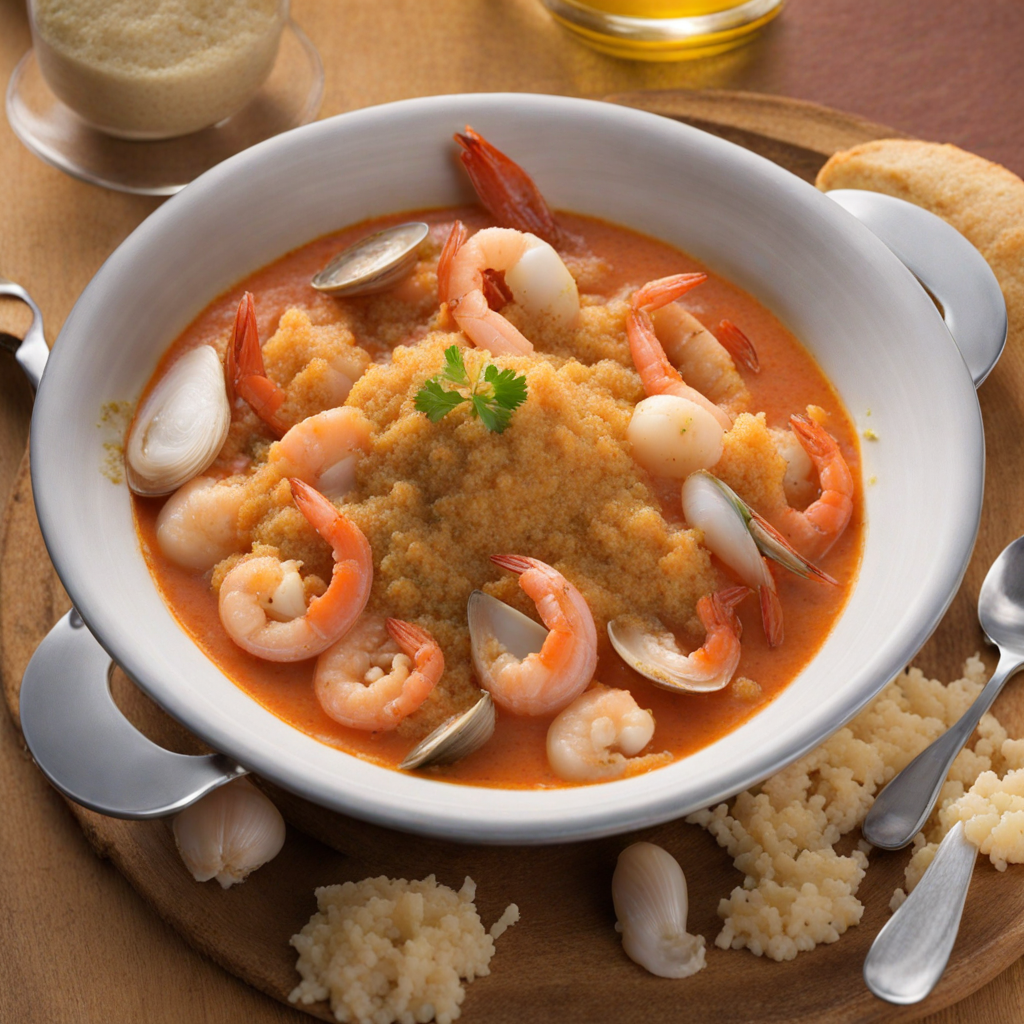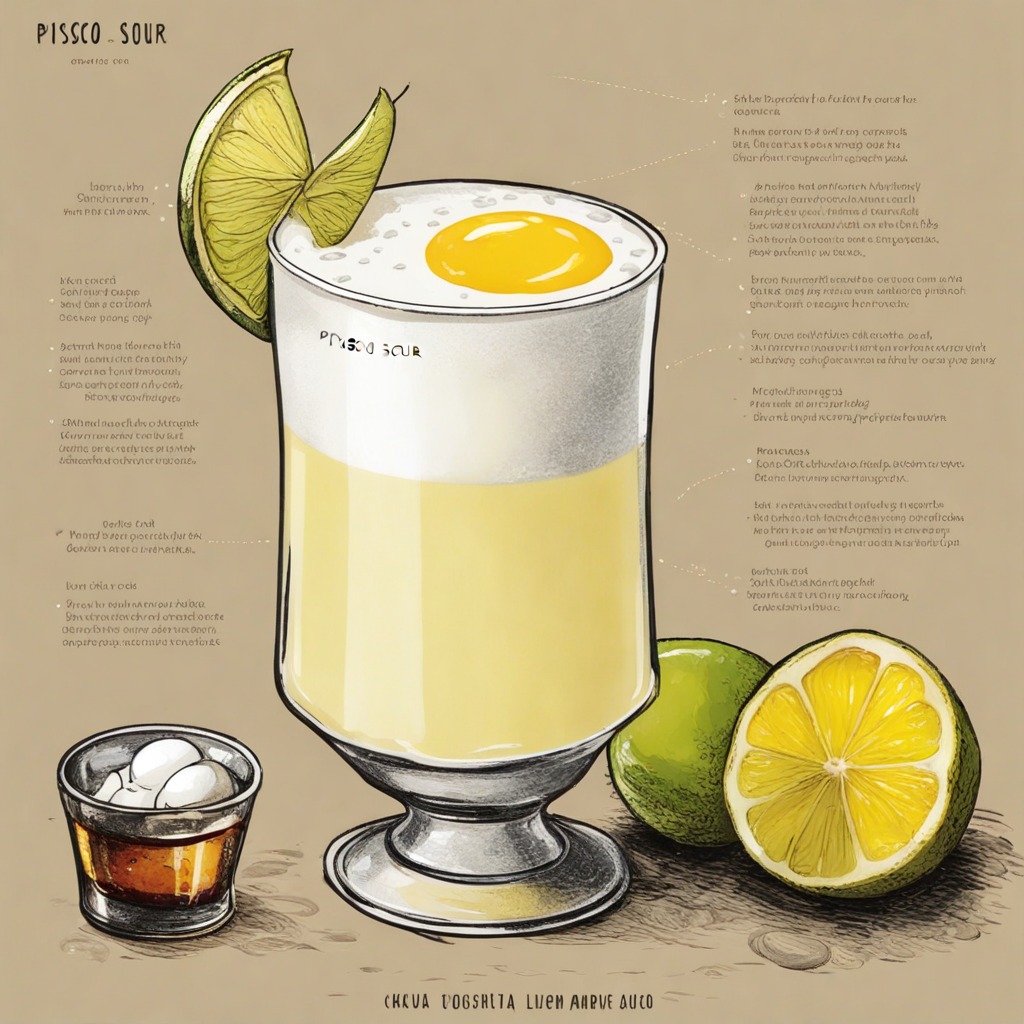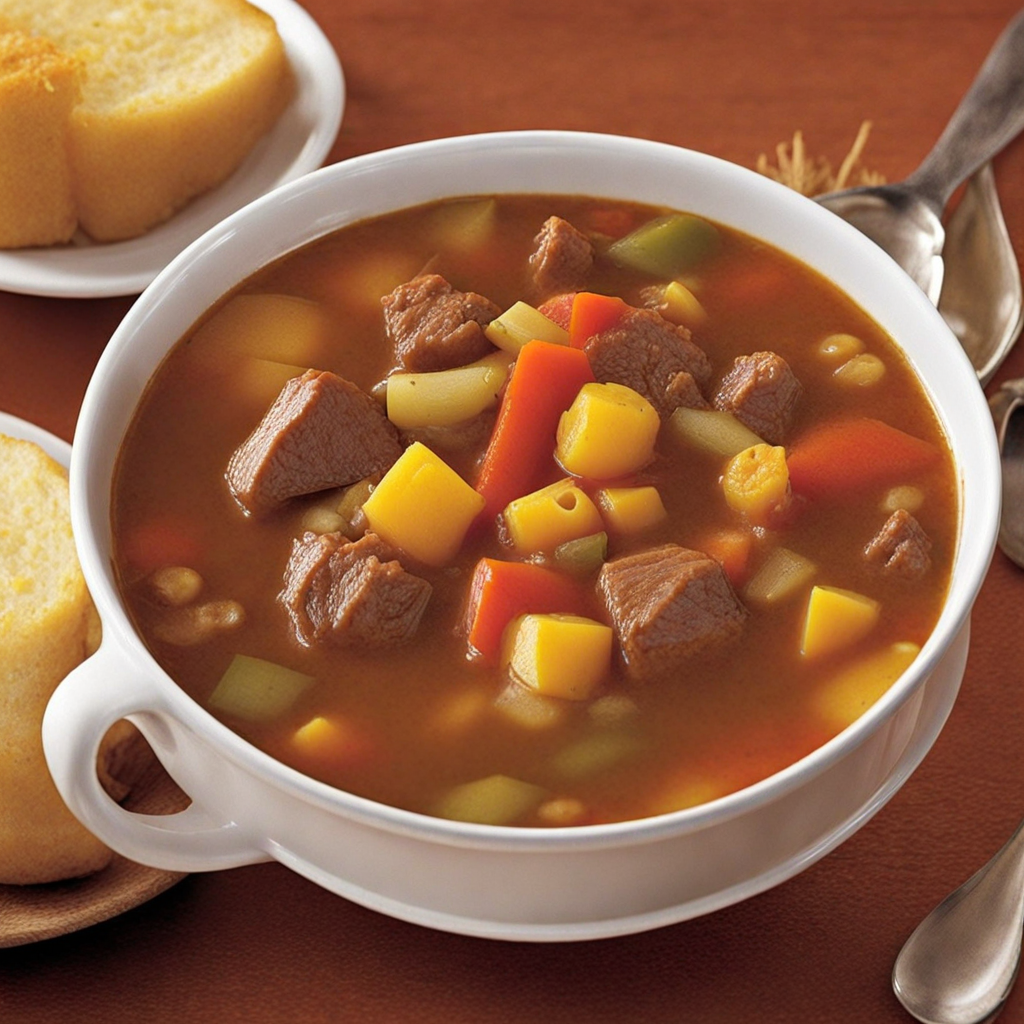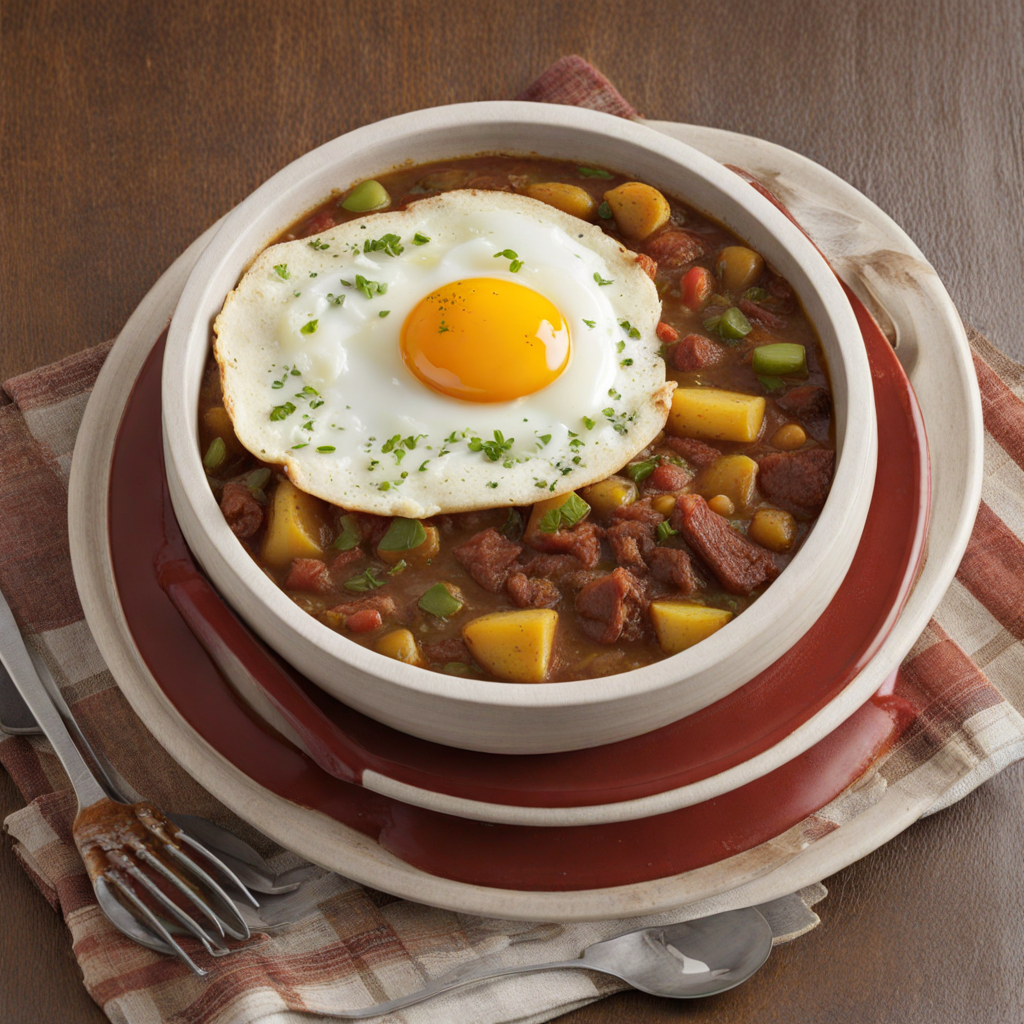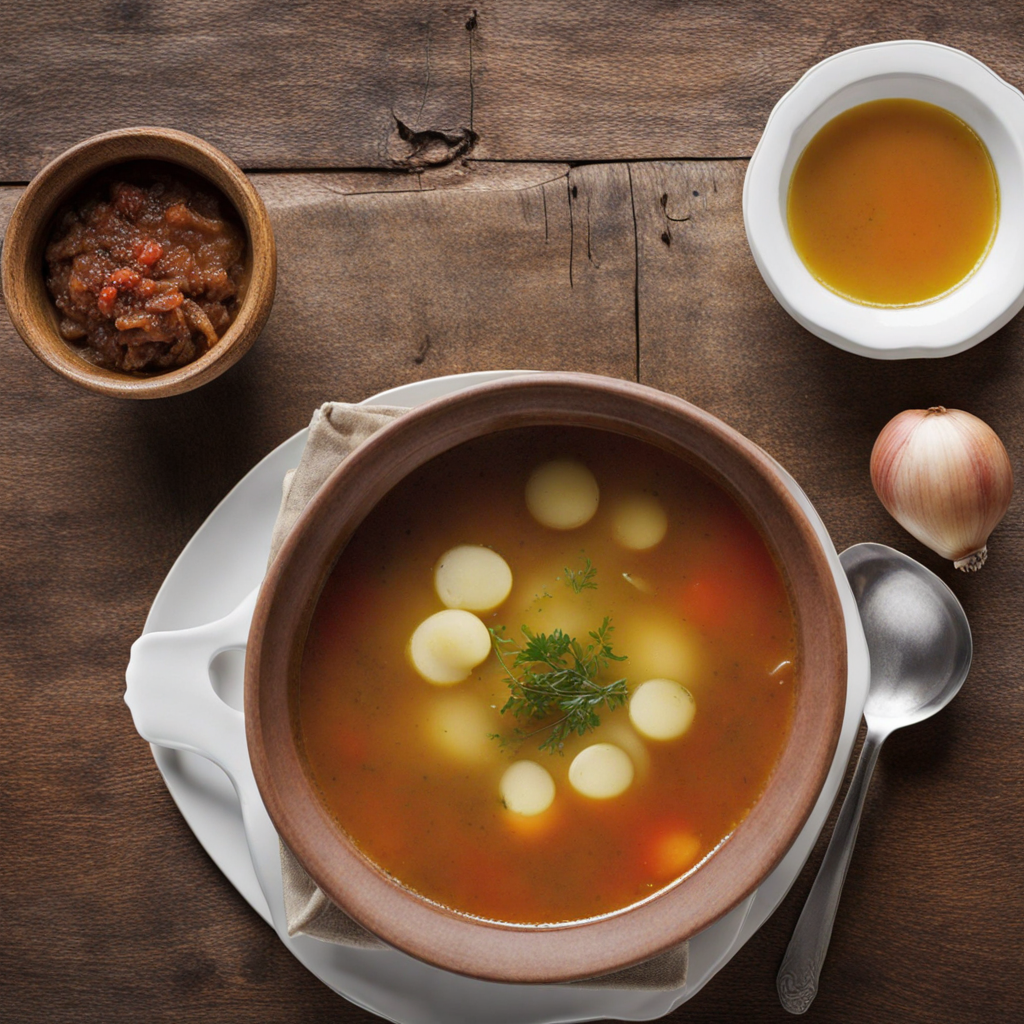Chupe de Mariscos
Chupe de Mariscos is a delightful seafood dish originating from the coastal regions of Chile, celebrated for its rich flavors and comforting texture. This traditional recipe showcases a medley of fresh shellfish, including shrimp, clams, and mussels, all simmered together in a flavorful broth. The dish is often enhanced with a variety of aromatic ingredients such as garlic, onions, and tomatoes, creating a robust base that perfectly complements the natural sweetness of the seafood. Each spoonful is a taste of the ocean, infused with the essence of Chilean coastal cuisine. What sets Chupe de Mariscos apart is its unique combination of creamy and savory elements. The dish typically features a generous layer of melted cheese, which lends a luscious creaminess that envelops the seafood, making it incredibly comforting and satisfying. Additionally, the use of corn and potatoes adds a hearty component, balancing the dish and making it a complete meal. The various textures—from the tender seafood to the creamy cheese and hearty vegetables—create a delightful experience for the palate, inviting you to savor each bite. Chupe de Mariscos is often served piping hot, making it a perfect dish for gatherings or special occasions. The presentation is typically rustic, served in a deep bowl or casserole dish, inviting diners to dig in and share the warmth of this beloved Chilean recipe. As you explore this dish, you'll discover not just a meal, but a cultural experience that reflects the rich maritime heritage of Chile. Whether enjoyed as a hearty main course or a comforting appetizer, Chupe de Mariscos is sure to leave a lasting impression on your taste buds.
How It Became This Dish
Chupe de Mariscos: A Culinary Journey Through Chile Introduction Chupe de Mariscos, a rich and hearty seafood chowder, is a cherished dish in the coastal regions of Chile, reflecting the country's diverse marine bounty and culinary traditions. With its roots deeply embedded in both indigenous and colonial influences, Chupe de Mariscos is more than just a meal; it represents a vibrant tapestry of Chile's cultural heritage and the evolution of its gastronomy. Origins The origins of Chupe de Mariscos can be traced back to the indigenous peoples of the Chilean coast, particularly the Mapuche and other coastal tribes, who relied heavily on the ocean for sustenance. These early inhabitants gathered a variety of shellfish, fish, and sea vegetables, which they prepared using simple techniques such as steaming or boiling. The term “chupe” itself is derived from the Quechua word “chhupi,” which means “to soak” or “to stew,” indicating its indigenous roots. As Spanish colonizers arrived in the 16th century, they brought with them new ingredients and culinary techniques. The fusion of indigenous and European cooking styles led to the development of various dishes that utilized local seafood alongside European staples like milk, cheese, and butter. This melding of flavors and techniques is what gave birth to the Chupe de Mariscos as we know it today. Cultural Significance Chupe de Mariscos is more than just a dish; it is a cultural emblem of Chile's coastal communities. In cities like Valparaíso and Concepción, it is often enjoyed during family gatherings, celebrations, and holidays. It has become a staple in many Chilean homes, particularly in the south, where the sea provides an abundance of fresh seafood. The dish is also significant in terms of regional identity. Each coastal region of Chile has its own take on Chupe de Mariscos, which incorporates local seafood and flavors. For instance, in the northern regions, you might find the use of more robust flavors like chili peppers, while in the south, the focus may be on creaminess and the use of local shellfish such as clams and mussels. This regional variation speaks to the diverse cultural influences and the geographical distinctions within Chile. Ingredients and Preparation The traditional recipe for Chupe de Mariscos typically includes a mix of local seafood such as shrimp, clams, mussels, and fish, combined with ingredients like potatoes, corn, and a base of milk or cream. The dish is often enriched with spices like paprika and is topped with cheese, which, when baked, forms a deliciously golden crust. Preparation usually starts with making a flavorful broth from the seafood shells, simmering them with onions, garlic, and spices. Once the broth is ready, the seafood is added along with the other ingredients. The mixture is then layered with cheese and baked to create a comforting and savory dish that is perfect for sharing. Development Over Time As Chile's culinary scene evolved throughout the 19th and 20th centuries, so did Chupe de Mariscos. The introduction of new cooking appliances and techniques, such as the use of the oven for baking, transformed how the dish was prepared. It became increasingly popular in urban settings, particularly as cities expanded and seafood became more accessible. In the mid-20th century, with the rise of tourism, Chupe de Mariscos found its place on restaurant menus, showcasing its appeal to both locals and visitors. Restaurants began to experiment with the dish, incorporating modern culinary techniques while maintaining its traditional roots. This period saw the emergence of gourmet variations, where chefs would elevate the dish with high-quality ingredients and innovative presentation. In contemporary Chile, Chupe de Mariscos continues to thrive as a beloved dish, often associated with comfort and family gatherings. Food festivals and culinary events celebrate traditional Chilean cuisine, highlighting Chupe de Mariscos as a quintessential dish that represents the country's rich culinary heritage. Global Influence and Modern Adaptations In recent years, as globalization has influenced culinary trends, Chupe de Mariscos has garnered attention beyond Chile's borders. International chefs and food enthusiasts have embraced the dish, introducing it to a broader audience. This exposure has led to creative adaptations, where chefs experiment with different seafood combinations, incorporate global flavors, or modify the dish for dietary preferences. Vegan and vegetarian versions of Chupe de Mariscos have emerged, replacing seafood with plant-based alternatives while striving to maintain the essence of the original dish. These adaptations reflect a growing awareness of sustainability and dietary preferences among consumers, ensuring that Chupe de Mariscos remains relevant in a rapidly changing culinary landscape. Conclusion Chupe de Mariscos is a dish steeped in history, culture, and tradition. Its evolution from indigenous roots to a beloved national dish encapsulates the story of Chile itself—a land shaped by the confluence of indigenous and colonial influences, where the bounty of the sea is celebrated in every home and restaurant. As it continues to adapt and thrive in the modern culinary world, Chupe de Mariscos stands as a testament to the enduring power of food to connect people, cultures, and histories. Whether enjoyed at a family gathering or a gourmet restaurant, this seafood chowder remains a delicious symbol of Chile's rich gastronomic heritage.
You may like
Discover local flavors from Chile


